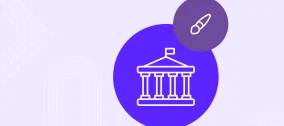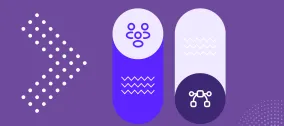Web Accessibility & SEO
We like to share valuable content. Specifically when it’s created by an expert in their field, and especially when the content is about things related to things about SEO & digital marketing. What’s the value of content that ranks #1 in a Google search, but isn’t accessible to a person with a disability? Or, what’s the value of content that meets all web accessibility standards, but it can’t be found in Google? The answer is the same for both - no value. Search engines are gatekeepers between your website and your target audience. Web accessibility helps to make content consumable by as many people as possible.
What is web accessibility?
Web accessibility is about removing the barriers that prevent people with disabilities from accessing websites. Web accessibility can take on many forms. It can mean that text-to-speech, or text-to-Braille software is being used on a website. That text and images are large, and/or enlargeable. It can also mean that websites can be navigated using only a keyboard. Essentially web accessibility means that all users have equal access to information and functionality, and visitors can interact with your website. Why is web accessibility important? Web Accessibility is critical because of how vital and important the Internet has become as a resource in many aspects of life: education, employment, government, commerce, health care, recreation, and the list can go on. It is essential that the Internet be accessible in order to provide equal access and equal opportunity to people with disabilities. Nearly 20% of Americans live with a disability and over half of those use the Internet according to the PEW Internet Project. The number of people with disabilities is significant, it is ever increasing, and it represents a vast market of potential customers. Having an accessible website makes it so much easier to engage with this potential audience. It’s not just the disabled users that benefit from web accessibility either as it also means older users with age-related accessibility needs can engage with your digital experience.
Web Accessibility and SEO
Search engine optimization (SEO) has been one of the cornerstones of digital marketing from the early days of the Internet. SEO is the practice of increasing the quantity and quality of website traffic from organic search engine results. A successful online marketing strategy around SEO must include empathy for your audience, and understanding what your target market is looking for. You can more effectively reach and keep those users once you grasp this concept. For the segment of your target audience with a disability, how they actually search online, or access the Internet may differ, for example they may or may not use a keyboard, but the process of conducting a search typically goes the same for everyone:
- Experience a need for an answer, solution, or piece of information.
- Formulate that need in a string of words and phrases, also known as “the query”, or keywords.
- Enter the query into a search engine.
- Browse through the results for a match.
- Click on a result.
- Scan for an answer, solution, or piece of information.
- If unsatisfied, go back to the search results, click on another result, or refine the query.
Google is clearly the search engine of choice and dominates the search engine market with 80% of the market share. Google is also taking a role in and making a difference in the area of web accessibility and the lives of people living with disabilities. Web Accessibility = Better SEO Accessibility doesn’t lead to better SEO. However, these two unrelated areas of web development share some overlap, and by understanding the overlap you can optimize for both. Here are a couple of good articles that explain not only the overlap between web accessibility and SEO, but also where they differ:
After all, web accessibility and SEO are both about getting relevant content to users. Main photo by Mikito Tateisi on Unsplash







